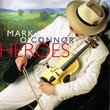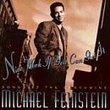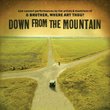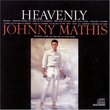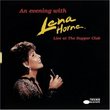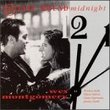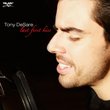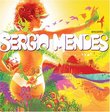| All Artists: Mark O'Connor, Steven Mercurio, London Philharmonic Orchestra Title: Fanfare for the Volunteer / O'Connor, Mercurio, London SO Members Wishing: 0 Total Copies: 0 Label: Sony Release Date: 10/19/1999 Genres: Country, Classical Styles: Forms & Genres, Concertos, Symphonies Number of Discs: 1 SwapaCD Credits: 1 UPC: 074646167922 |
Search - Mark O'Connor, Steven Mercurio, London Philharmonic Orchestra :: Fanfare for the Volunteer / O'Connor, Mercurio, London SO
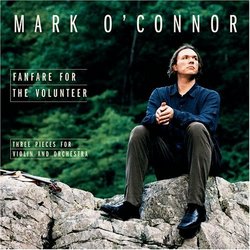 | Mark O'Connor, Steven Mercurio, London Philharmonic Orchestra Fanfare for the Volunteer / O'Connor, Mercurio, London SO Genres: Country, Classical
Mark O'Connor is the heir to a long line of composer-performers who wrote music for themselves to play. Like his predecessors, O'Connor writes to his strengths, which include a lovely, expressive tone, a natural, easy way ... more » |
Larger Image |
CD DetailsSynopsis
Amazon.com Mark O'Connor is the heir to a long line of composer-performers who wrote music for themselves to play. Like his predecessors, O'Connor writes to his strengths, which include a lovely, expressive tone, a natural, easy way with the instrument, and an innate feeling for the style. The three works on this record were initially conceived as the movements of a concerto, and though they became independent pieces, they're connected by thematic and melodic elements. In style and atmosphere, they take their inspiration from the folk music, as well as the landscape and history, of America. "Call of the Mockingbird" is a study in the evocation of nature and its sounds. The solo violin joins woodwinds, horns, and string pizzicato in conjuring the voices of birds, and there is an improvised, unaccompanied cadenza toward the end. The music breathes a simple, peaceful serenity. "Trail of Tears" commemorates the tragic dispossession of the Cherokee Indians; melancholy, a bit dissonant, the music has the heavy tread of a forced march and builds up to a powerful climax. In "Fanfare for a Volunteer," the death march becomes a clarion call for freedom, with drums, trumpets, and other brass; the solo fiddle bursts into a string of tunes and dances, and joins the drums in another improvised cadenza. After a quiet interlude, the piece ends with more martial fifes and drums. Throughout, perhaps the most unusual aspect of the music is the combination of folk-style fiddling with the highly sophisticated, masterful scoring for a large symphony orchestra; indeed, O'Connor's avowed purpose is to showcase the orchestral sections as much as the soloist. His playing is superb, disciplined as well as free, and the orchestra supports him splendidly. --Edith Eisler Similarly Requested CDs
|
CD ReviewsAn Olympian and Exhilarating "Concerto for Everyman"! Bob Zeidler | Charlton, MA United States | 04/02/2000 (5 out of 5 stars) "My entry into the performance and composition worlds of Mark O'Connor was by way of Yo-Yo Ma, with the release of "Appalachia Waltz" a few years back. As a one-time violinist, I was intrigued enough by this album that I was led naturally to a search both into O'Connor's musical past and into his work subsequent to that album. An incomplete listing of O'Connor projects on record that I uncovered include "The Fiddle Concerto" (an interesting combination of 19th century throwback ideas and country fiddling, and an obvious warm-up exercise for the masterpiece under review), "Liberty" (compiling the best of his work for the PBS series "Liberty! The American Revolution"), his session work in a group called Strength in Numbers, anticipating, fully twelve years in advance, the currently hot Edgar Meyer album "Short Trip Home," and his solo album "Midnight on the Water." Unquestionably, O'Connor has technique to burn. With his technical security and leanness of tone, he brings to mind Heifetz. No one presently living knows, of course, how Paganini sounded when he performed, but we should not be surprised regarding comparisons made between O'Connor and Paganini, particularly with both of them being guitar virtuosi as well. But the rap against Paganini-perhaps too facile and self-indulgent-can apply equally to O'Connor. "Midnight on the Water" is a case in point; in my mind, this is not a work that can be listened to with any frequency on its musical merits alone. (For budding violin students, the matter is somewhat different; they will listen to it from a very different perspective.) With "Fanfare for the Volunteer," all's right with the world again. Every once in a while (all too rarely these days, unfortunately), something comes along to reaffirm one's belief that music of universal directness and accessibility and unabashed romanticism is still possible. "Fanfare for the Volunteer" is, to me, several things: O'Connor's glorious tribute to his own heritage and to the larger issue of the best of Americana; a referential tribute to other American composers and artists done with more-than-acceptable subtlety and taste; a truly remarkable leap forward in his compositional skills, fully worthy of being called a "Concerto for Orchestra and Violin" (the self-indulgence being notable by its absence). And, most importantly, a work that can be listened to again, and again, and again... Absolutely irresistible! While notice is paid, in the booklet notes, to the fact that each of the three movements of this work can stand on its own, it is impossible for me to think of this work as anything other than a full-blown major essay in the concerto form. I find it impossible to listen to just one movement; the work demands listening from start to finish each time. The work requires virtuoso section work from the orchestra, which, as envisioned by O'Connor, is fully the equal of the soloist. In this sense, it brings to mind the best violin concerto of the past century, the Sibelius. Not faint praise. But what I find myself appreciating most in this work are what I take as musical tributes scattered throughout. As in the best of such instances, these are not derivative "rip-offs" but allusions to those who have led the way and laid down markers for others to follow. I can hear Copland in the open harmonies, Hanson in the romanticism (and in the tympani ostinato at about 11:15 in "Trail of Tears"), Williams in his "E.T." mode in the sweeping unison horn theme shortly after the opening and, fittingly, in the likeness to "Schindler's List" in "Trail of Tears," Adams in the use of minimalist techniques throughout, most particularly and directly in the massed strings at 11:43 in the final movement, and, it needs to be said, Leo Arnaud for the fanfares themselves. Truly olympian, for those who pick up on this musical pun! But the best, and nicest, tribute of all is O'Connor's direct quotation of "Shenandoah" near the end of the work. I cannot do otherwise except to interpret this as a tribute to a fellow fiddler, Darol Anger, who created a wonderful concept album ("Heritage") with this bit of classic Americana as its main thread. That, too, is an album which I hold dear to my heart. If you are so inclined, Mr. O'Connor, perhaps you would use the "Comments by the Artist" opportunity at this review page to address my thoughts on this. A "Concerto for Everyman" juxtaposing sweeping scope and ineffable sweetness, and the first great concerto of the new millennium. Hopefully, next year's Best Classical Crossover Grammy winner. And, at least as hopefully, a work that will inspire budding violinists to spread their wings and fly. Most definitely a keeper; I get an incredible rush each time I listen to it! I have no difficulty understanding why the reviewer below was brought to tears. Surely we need more music with this innate capability. Mark O'Connor now clearly has his arms around the compositional skills needed for connecting with the listener in such a direct way. We eagerly await his next major essay in this form. Bravo, Mark! Bob Zeidler" Fanfare for the volunteer Andrew Colaninno | 01/17/2000 (5 out of 5 stars) "There are few clasical works good enough to bring tears to my eyes at the absolute beauty of the music. This CD did. I rate it as a modern masterpiece and worthy of just about any price to acquire it." Music for the heart and soul Ruth F Blanchette | dallas, tx United States | 09/03/2000 (5 out of 5 stars) "Mark O'Connor with his understanding and love of the violin and his love of life has captured the essence of the heart breaking beauty of the Tennessee hills. His music soars and swoops and dips weaving a magical life of its own. If you enjoy the passion of Hillary Hahn wait until you begin to listen to Mark's story because that is what this piece is. It is the story of the Cherokees and their heart-rending loss of their land. It is the story of the seasons with their beauty and their harshness. This CD will be one you will play over and over and over, never tiring and each time finding something new that will for just a short space in time, take your breath away."
|

 Track Listings (3) - Disc #1
Track Listings (3) - Disc #1